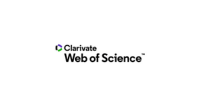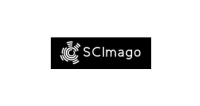PISCICULTURA SUPERINTENSIVA ASSOCIADA À HIDROPONIA EM SISTEMA DE RECIRCULAÇÃO DE ÁGUA
DOI:
https://doi.org/10.5380/avs.v14i2.13365Palavras-chave:
Lactuca sativa, Oreochromis niloticus, produção, productionResumo
O avanço da tilapicultura no mundo está levando a intensificação do descarte de efluentes no ambiente e acarretando sérios riscos à natureza. No entanto, integrando-se piscicultura superintensiva, recirculação de água e hidroponia, tais resíduos deixam de ser descartados, sendo então reaproveitados pelos vegetais. Com este intuito, objetivou-se com este trabalho avaliar o crescimento de tilápias Oreochromis niloticus e alfaces hidropônicas (Lactuca sativa), bem como, analisar paralelamente a qualidade da água a fim de validar a integração piscicultura intensiva e hidroponia, sem o uso de fertilizantes, em sistema de recirculação fechada com uso de biofiltro externo. As qualidades físico-químicas da água foram mantidas adequadas durante todo período experimental. Foram obtidos valores satisfatórios quanto ao ganho de peso, pesagem final, conversão alimentar e sobrevivência dos peixes, os quais apresentaram comprimento e peso final médio de, respectivamente, 17,6 cm e 100,2 g, em uma densidade de 130 peixes/m3. O consumo de ração total foi de 4760 g e a conversão alimentar foi de 0,5. Obteve-se 43 pés de alfaces, com diâmetro médio de 33,6 ± 5,9 cm e peso de 158,33 ± 49,19g. Conclui-se que o sistema desenvolvido pode assegurar um desenvolvimento sustentável e otimizado na atividade aquática, racionalizando o uso da água através da integração do sistema hidropônico.
Downloads
Como Citar
Edição
Seção
Licença
Autores que publicam nesta revista concordam com os seguintes termos:
- Autores mantém os direitos autorais e concedem à revista o direito de primeira publicação, com o trabalho simultaneamente licenciado sob a Creative Commons - Atribuição 4.0 Internacional que permite o compartilhamento do trabalho com reconhecimento da autoria e publicação inicial nesta revista.
- Autores têm autorização para assumir contratos adicionais separadamente, para distribuição não-exclusiva da versão do trabalho publicada nesta revista (ex.: publicar em repositório institucional ou como capítulo de livro), com reconhecimento de autoria e publicação inicial nesta revista.
- Autores têm permissão e são estimulados a publicar e distribuir seu trabalho online (ex.: em repositórios institucionais ou na sua página pessoal) a qualquer ponto antes ou durante o processo editorial, já que isso pode gerar alterações produtivas, bem como aumentar o impacto e a citação do trabalho publicado.













